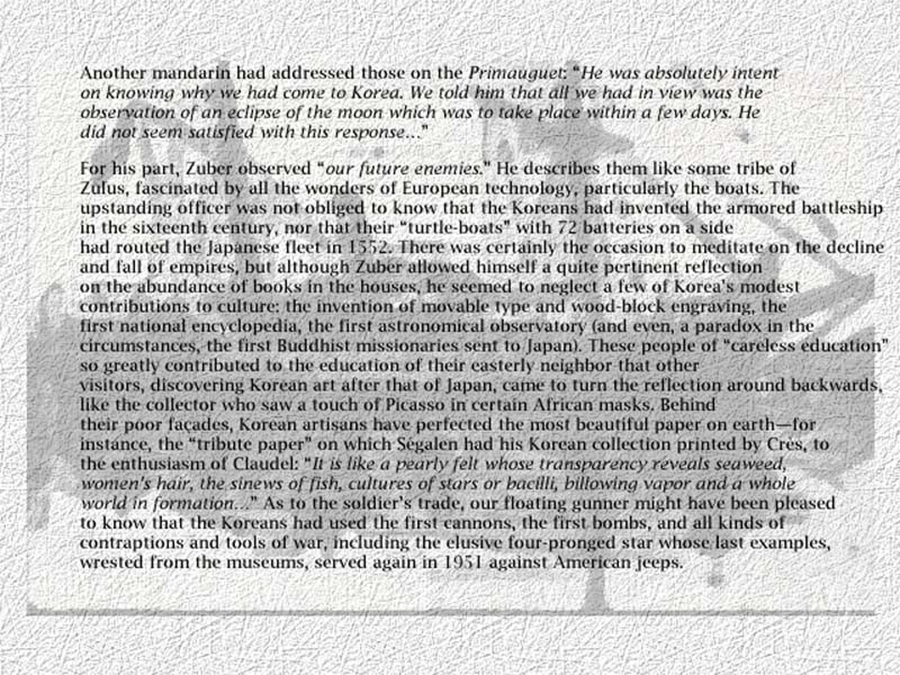COREENNES_KORTRIG STACK006

- Id : 797
- Catégorie : PHOTO
- Séquence : Coréennes_Kortrig
- Card : COREENNES_KORTRIG STACK006
Navigation :
Médias :
No clipNo sound
Text :
Another mandarin had addressed those on the Primauguet: "He was absolutely intent
on knowing why we had come to Korea. We told him that all we had in view was the
observation of an eclipse of the moon which was to take place within a few days. He
did not seem satisfied with this response..."
For his part, Zuber observed "our future enemies." He describes them like some tribe of
Zulus, fascinated by all the wonders of European technology, particularly the boats. The
upstanding officer was not obliged to know that the Koreans had invented the armored battleship
in the sixteenth century, nor that their "turtle-boats" with 72 batteries on a side
had routed the Japanese fleet in 1552. There was certainly the occasion to meditate on the decline
and fall of empires, but although Zuber allowed himself a quite pertinent reflection
on the abundance of books in the houses, he seemed to neglect a few of Korea's modest
contributions to culture: the invention of movable type and wood-block engraving, the
first national encyclopedia, the first astronomical observatory (and even, a paradox in the
circumstances, the first Buddhist missionaries sent to Japan). These people of "careless éducation"
so greatly contributed to the education of their easterly neighbor that other
visitors, discovering Korean art after that of Japan, came to turn the reflection around backwards.
like the collector who saw a touch of Picasso in certain African masks. Behind
their poor façades, Korean artisans have perfected the most beautiful paper on earth- for
instance, the "tribute paper" on which Segalen had his Korean collection printed by Cres, to
the enthusiasm of Claudel: "It is like a pearly felt whose transparency reveals seaweed,
women's hair, the sinews of fish, cultures of stars or bacilli, billowing vapor and a whole
world in formation." As to the soldier's trade, our floating gunner might have been pleased
to know that the Koreans had used the first cannons, the first bombs, and all kinds of
contraptions and tools of war, including the elusive four-pronged star whose last examples,
wrested from the museums, served again in 1951 against American jeeps.